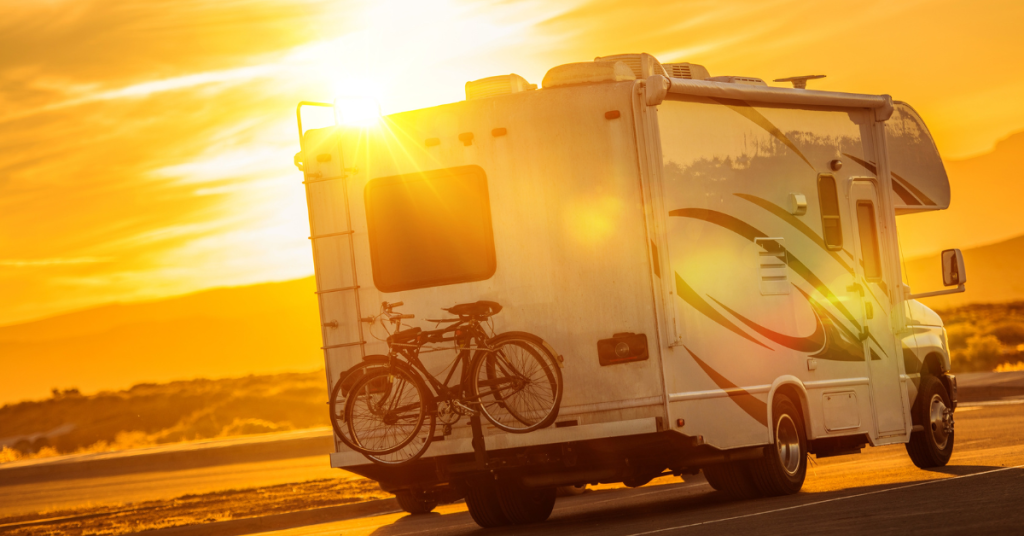
Tips & Best Practices to Make RV Travel More Eco-Friendly
When you compare driving multiple vehicles or flying, RVing is the more environmentally friendly mode of transportation. Most of this eco-friendliness is due to RV travelers consolidating their accommodations and transportation into a single solution. However, when RVing, you can take many cost-efficient steps to reduce your environmental impact further. Let’s look at a few actionable steps while RVing to reduce your carbon footprint.
Maximize & Optimize Your Fuel Efficiency with Smarter Driving
When you think of RVs, you probably don’t associate them with fuel efficiency. And rightly so. Fortunately, you can make many behavioral changes to maximize your RV’s fuel efficiency and reduce your environmental impact. Some of these may include:
- Drive Slower: The faster you drive, the quicker your RV will burn fuel.
- Maintain a Steady Speed: Avoid rapid acceleration and braking. Aim for a consistent speed between 55 and 65 mph, often the sweet spot for RV fuel efficiency.
- Use Cruise Control: Using cruise control whenever possible can help maximize your efficiency.
- Plan Your Route: Choose less hilly routes and avoid high-traffic areas to minimize stop-and-go driving.
- Coast Whenever Possible: When approaching a stop or going downhill, ease off the gas pedal and let your RV coast to save fuel.
- Minimize Idling: Turn off your engine when parked for extended periods, as idling wastes fuel unnecessarily.
In addition, keeping your tires properly inflated, lightening your load, and having regular maintenance can help ensure you get the most out of every drop of fuel.
Harness the Power of the Sun
The sun represents boundless clean energy that costs nothing to convert. As a result, an increasing number of RVers are equipping solar panels to reduce their carbon footprint. Better yet, many of the latest models come pre-wired for solar power, making it easier than ever to harness the sun’s energy.
Installing solar panels on your RV gives you access to a renewable and cost-effective power source. This reduces dependence on traditional energy sources, contributing to lower carbon emissions and a cleaner environment.
As a bonus, you will enjoy the convenience of on-demand power, even in remote locations, allowing you to use appliances and electronics without relying on generators or hookups. Solar panels are also low-maintenance, requiring minimal upkeep beyond occasional cleaning.
While there’s an initial investment, the long-term savings from reduced fuel consumption can more than compensate for the cost, making solar-powered RVs a wise and sustainable choice for eco-conscious adventurers.
Prioritize Energy Efficiency
Every part of your RV requires energy to run, creating endless opportunities to prioritize energy efficiency. You have to know where to look. Here are a few ways you can prioritize energy efficiency:
- Use LEDs: Replace traditional light bulbs and strips with energy-saving LEDs. This easy and affordable upgrade can significantly affect your RV’s power consumption.
- Upgrade Appliances: Explore energy-efficient alternatives for your RV’s appliances, such as refrigerators and microwaves. These models consume less power, reducing your overall energy usage.
- Strategic Parking: Utilize nature’s resources to regulate temperature. Park in the shade on hot days to minimize air conditioning needs, and soak up the sun’s warmth on colder days to reduce reliance on heating.
Use Premium Tint: If your RV doesn’t have tint, you can significantly reduce your carbon footprint by investing in premium-quality tint.
Insulate Your RV
While insulation could’ve easily been grouped in the previous category, it deserves more discussion. Proper RV insulation is critical to comfort and sustainability. It creates a barrier against extreme temperatures, making your RV more energy-efficient and reducing your carbon footprint.
Effective insulation reduces heat loss in winter and heat gain in summer, maintaining a comfortable interior temperature without excessive energy use. This translates to a more pleasant living environment and lower energy bills. Many insulation options cater to different needs and budgets:
- Foam Board Insulation: Lightweight, easy to install, and ideal for floors and ceilings.
- Reflective or Radiant Barrier Insulation: Reflects heat away and is often used with foam board for walls and roofs.
- Spray Foam Insulation: Offers high R-value and fills gaps for comprehensive coverage, though more expensive and labor-intensive.
- Thermal Curtains and RV Skirting: Provide additional insulation for windows and the undercarriage, further reducing heat loss.
Choosing the right insulation strategy allows you to transform your RV into a cozy, energy-efficient home on wheels while contributing to a more sustainable lifestyle.
Contact RV Roadway to Bolster the Efficiency of Your RV
RV Roadway offers two best-in-class RV dealerships in Calera and Opelika. Our seasoned sales professionals specialize in matching your unique needs and budget to the best solution. If you already have an RV, our state-of-the-art RV Service Center and RV Parts Center offer innovative energy-efficient upgrades at an affordable price. Contact us today to take life on the road.
